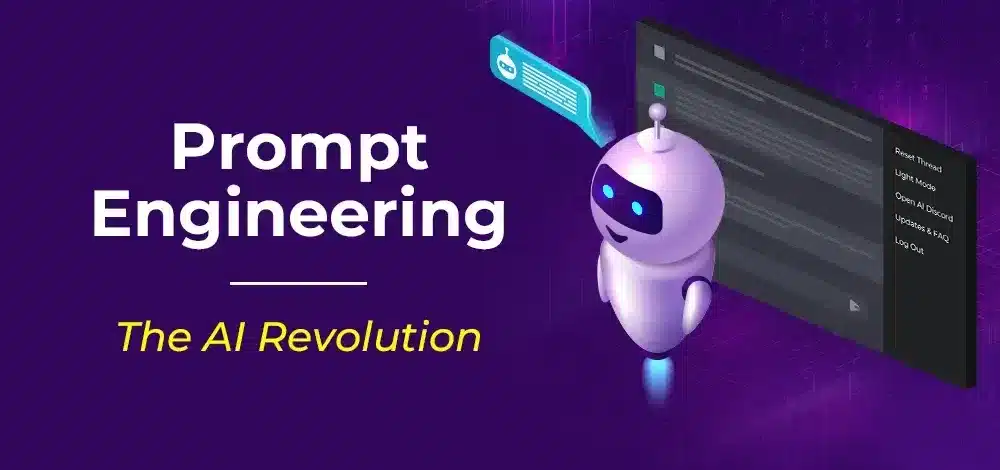
The New Frontier of AI in Marketing –
Artificial intelligence has rapidly transformed marketing, changing how brands communicate, engage, and convert audiences. From generating ad copy to designing personalized email sequences, AI-powered tools like ChatGPT are now central to modern marketing operations. However, the real differentiator isn’t simply using AI — it’s knowing how to communicate with it effectively. This is where prompt engineering emerges as a vital marketing skill. It’s not just a technical capability; it’s the new creative language of digital marketing, enabling professionals to guide AI toward producing precise, relevant, and persuasive content.
Understanding Prompt Engineering –
Prompt engineering refers to the process of crafting clear, detailed instructions — or prompts — to guide AI systems in generating meaningful and accurate responses. In simple terms, a “prompt” is what you tell the AI to do. The better you define the context, audience, and tone, the better the AI’s output. For marketers, prompt engineering functions like writing a creative brief for an intelligent assistant. For example, instead of saying “Write a product description,” a marketer might say, “Write a 100-word product description for a premium skincare brand targeting eco-conscious millennials, focusing on natural ingredients and sustainability.” This level of specificity ensures the output is both brand-aligned and audience-relevant.
Why It Matters to Modern Marketers –
Prompt engineering is quickly becoming a critical skill because it determines how effectively marketers can use AI tools for content creation, campaign strategy, and audience engagement. A well-structured prompt allows marketers to personalize messages at scale, produce creative ideas faster, and maintain consistent brand tone across channels. It also enhances conversion rates by helping AI generate language that resonates emotionally with target audiences. In essence, prompt engineering allows marketers to translate brand strategy into intelligent, adaptable AI communication. Those who master it can create conversations that not only attract attention but also drive action.
Crafting Prompts That Convert –
The effectiveness of AI-generated marketing content depends heavily on the structure and intent of the prompt. Marketers should include five key elements in their prompts: purpose, audience, tone, context, and desired outcome. For example, if you are creating a landing page headline, you might prompt the AI with: “Write five catchy landing page headlines for a SaaS product that helps small businesses automate bookkeeping, focusing on simplicity, affordability, and trust.” Such clarity leads to better copy and more targeted messaging. This structured prompting can be applied across the customer journey — from awareness-stage blog ideas and social media posts to conversion-stage CTAs and retargeting ads.
From Creativity to Conversion –
Prompt engineering doesn’t eliminate creativity; it amplifies it. Marketers can use AI as a brainstorming partner, experimenting with different tones, formats, and ideas at a pace that was previously impossible. By iterating on prompts, marketers can quickly test messaging variations, evaluate engagement data, and refine the best-performing copy. This not only accelerates the creative process but also supports data-driven marketing strategies. When used effectively, prompt engineering can turn AI from a generic content generator into a powerful creative collaborator that understands both the science of persuasion and the art of storytelling.
The Human Element Behind AI Communication –
While prompt engineering enhances automation, it still depends on human empathy and strategic thinking. AI can simulate tone, but it can’t replace genuine understanding of customer emotions and motivations. The best prompt engineers think like their audience — they anticipate questions, address pain points, and evoke curiosity. In this way, prompt engineering becomes a human-AI partnership where the marketer defines intent, and AI helps express it more efficiently. The result is communication that feels authentic, empathetic, and relevant — a crucial factor in building trust and driving conversions.
Building Prompt Fluency as a Marketing Competency –
To build expertise in prompt engineering, marketers should start by learning how AI models interpret information. Experimentation is key — marketers should test different prompt structures, analyze results, and refine them for consistency and performance. Developing prompt libraries within teams can also streamline collaboration, ensuring everyone uses AI tools with the same level of precision and creativity. Over time, prompt engineering will evolve from a niche capability to a core marketing competency, much like SEO or social media analytics once did.
The Future of Marketing Conversations –
As AI continues to evolve, the marketers who can “speak AI fluently” will stand out. Prompt engineering is not just about telling machines what to do — it’s about crafting digital conversations that feel natural, persuasive, and brand-aligned. In a world where every company has access to similar AI tools, true competitive advantage will come from how marketers shape those tools to reflect brand identity and customer emotion.
Conclusion –
Prompt engineering represents the next wave of marketing innovation. It blends creativity, strategy, and technology to produce content and campaigns that convert more effectively. By mastering this emerging skill, marketers can turn AI from a passive assistant into an active creative partner — one capable of delivering highly personalized, emotionally intelligent, and conversion-focused communication. The future of marketing belongs to those who can craft not just messages, but prompts that inspire conversations — and conversions.

